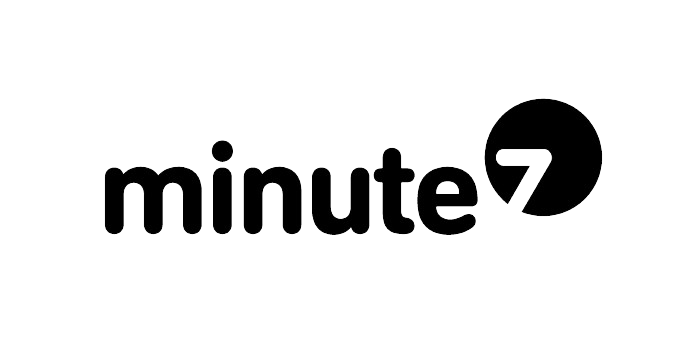Time tracking fatigue is real. You start the week motivated to log every minute, but by Wednesday, you’re forgetting to hit “start” on your timer. By Friday, you’re scrambling to reconstruct your week from memory. If this sounds familiar, you’re not alone. Many professionals struggle to maintain consistent time tracking habits, even when they know it’s essential for accurate billing, project management, and business insights.
The good news? With the right strategies and tools, you can overcome time tracking fatigue and build habits that stick. Let’s explore practical tips to help you stay consistent without burning out.
Why Time Tracking Fatigue Happens
Before we dive into solutions, it’s important to understand why time tracking becomes exhausting:
It feels like micromanagement. Constantly starting and stopping timers can feel tedious, especially when you’re switching between multiple tasks throughout the day.
You forget to track. When you’re deep in focused work, the last thing on your mind is clicking a timer. By the time you remember, you’ve already lost track of how long you’ve been working.
The process is too complicated. If your time tracking tool requires multiple steps or doesn’t integrate with your workflow, you’re more likely to skip it altogether.
You don’t see immediate value. When the benefits of time tracking feel distant or unclear, it’s hard to stay motivated to maintain the habit.
Practical Strategies to Beat Time Tracking Fatigue
1. Choose a Tool That Fits Your Workflow
The easiest way to maintain consistent time tracking is to use a tool that doesn’t disrupt your existing processes. Look for solutions that integrate seamlessly with the software you already use daily.
For example, if you’re using QuickBooks for accounting, choosing a QuickBooks time tracking solution that syncs automatically can eliminate double entry and reduce friction. Tools like Minute7 integrate directly with QuickBooks Online and QuickBooks Desktop, allowing you to track time and expenses in one place and transfer them to invoices with minimal effort.
2. Automate Where Possible
Manual time tracking is exhausting. The more you can automate, the less mental energy you’ll spend on the process.
Consider tools with features like:
-
Automatic timers that start when you open specific applications or projects
-
Recurring time entries for regular tasks you perform weekly
-
Mobile apps that let you track time on the go without switching devices
-
Browser extensions that integrate with your project management tools
Automation doesn’t mean sacrificing accuracy—it means reducing the cognitive load of remembering to track every single task.
3. Simplify Your Time Categories
One major source of time tracking fatigue is over-complication. If you have dozens of project codes, task types, and billing categories to choose from, you’ll spend more time categorizing than actually working.
Streamline your approach by:
-
Creating broad categories that cover most of your work
-
Limiting the number of active projects or clients you track simultaneously
-
Using consistent naming conventions that are easy to remember
-
Reviewing and archiving old projects regularly
The goal is to make time entry as quick and intuitive as possible.
4. Build Time Tracking Into Your Routine
Consistency comes from habit, and habits form through routine. Instead of trying to track time reactively throughout the day, schedule specific moments to log your hours.
Try these routines:
-
Morning planning: Review your schedule and set up timers for your planned tasks
-
Task transitions: Log time whenever you switch between projects or take a break
-
End-of-day review: Spend 5 minutes at the end of each workday reviewing and filling any gaps
-
Weekly reconciliation: Set aside 15 minutes every Friday to ensure your time entries are complete and accurate
Choose the routine that fits your work style and stick with it for at least three weeks to form the habit.
5. Track in Real-Time (Not Retrospectively)
One of the biggest mistakes people make is trying to reconstruct their week from memory. This approach is not only inaccurate but also mentally exhausting.
Real-time tracking might feel cumbersome at first, but it’s actually less draining than trying to remember what you did three days ago. The key is making it as frictionless as possible with the right tools and routines.
If you absolutely must track retrospectively, do it daily rather than weekly. Your memory is much more reliable when you’re only looking back a few hours instead of several days.
6. Focus on the Benefits
Time tracking fatigue often stems from losing sight of why you’re tracking in the first place. Regularly remind yourself of the tangible benefits:
-
Accurate billing: Ensure you’re compensated fairly for all your work
-
Profitability insights: Identify which projects or clients are most profitable
-
Productivity awareness: Understand where your time actually goes versus where you think it goes
-
Better estimates: Use historical data to provide more accurate project quotes
-
Work-life balance: Track your total hours to ensure you’re not consistently overworking
When you connect time tracking to meaningful outcomes, it becomes easier to maintain the discipline.
7. Use Mobile-Friendly Solutions
Much of today’s work happens outside the traditional office environment. If your time tracking tool is desktop-only, you’re likely missing billable hours spent in client meetings, traveling, or working remotely.
Look for solutions with robust mobile apps that let you:
-
Start and stop timers with a single tap
-
Add time entries while offline
-
Attach photos of receipts for expense tracking
-
Sync automatically when you’re back online
Mobile accessibility removes one more barrier to consistent tracking.
8. Review and Reflect Regularly
Make time tracking a feedback loop rather than just a logging activity. Set aside time weekly or monthly to review your tracked hours and extract insights.
Ask yourself:
-
Which projects took longer than expected and why?
-
Are there tasks you consistently forget to track?
-
Do certain times of day show higher productivity?
-
Are you allocating time according to your business priorities?
This reflection transforms time tracking from a chore into a valuable business intelligence tool.
Making Time Tracking Work for Your Business
Time tracking doesn’t have to be a source of stress and fatigue. By choosing tools that integrate with your existing workflow, automating repetitive tasks, and building consistent habits, you can maintain accurate time records without burning out.
If you’re looking for a QuickBooks time tracking solution that simplifies the process, consider options designed specifically for integration and ease of use. The right tool should feel like a natural extension of your workflow, not an additional burden.
Remember: The goal isn’t perfect time tracking—it’s consistent time tracking that’s accurate enough to support your business decisions and billing practices. Start with small changes, build sustainable habits, and adjust your approach as needed. Your future self (and your bottom line) will thank you.
Ready to simplify your time tracking? Explore how integrated time tracking solutions can reduce fatigue and improve accuracy for your business.




